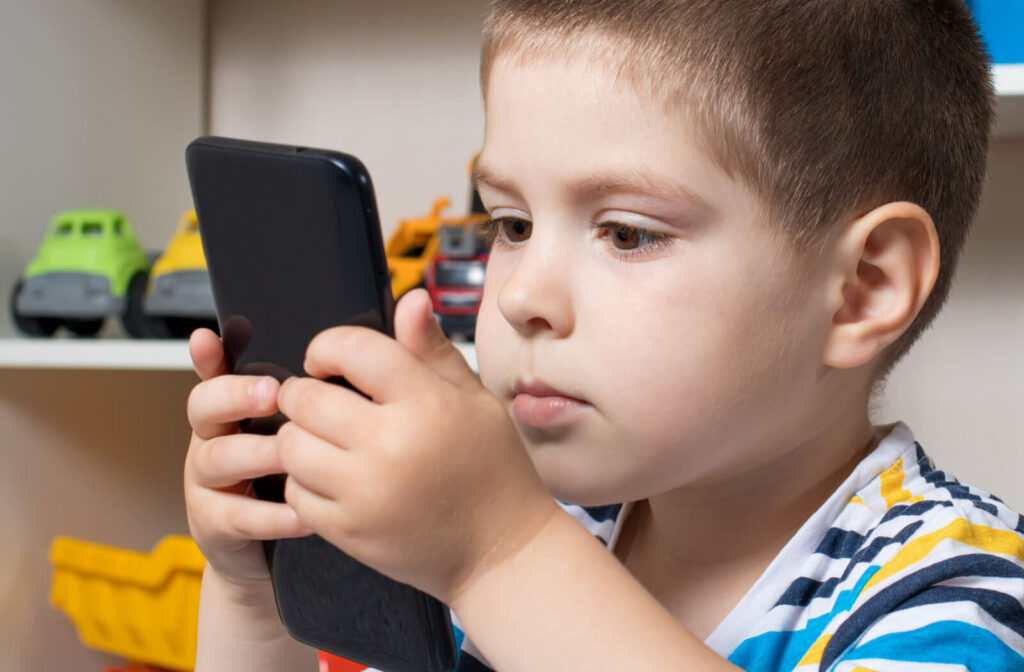With rising rates of myopia (also known as short-sightedness or nearsightedness) in children, parents are doing more to learn how to best manage myopia and their children’s vision. They’re asking questions like: Do eye drops help with myopia? Can spending time outside help with vision?
Nearsightedness is more than just the need for glasses or contact lenses to watch TV—myopia is a major contributor to loss of vision. In children, myopia is also progressing faster and develops earlier, and there is no way to reverse it.
Fortunately, there are ways to slow its progression, making it easier to live with as an adult.
What Is Myopia?
Myopia is a common vision problem where you can see things close to you clearly but objects far away are blurry. It happens when the shape of your eye causes light to refract incorrectly, causing it to focus before reaching your retina rather than at the retina.
Myopia not only causes blurry distance vision, but it also increases the risk of serious, sight-threatening eye diseases if left untreated such as:
- Glaucoma
- Cataracts
- Retinal eye diseases
Myopia in Children
Communication skills are the most difficult aspect of identifying myopia in children. Some children don’t understand what the world should look like, or they’ve only seen the world in one way their entire lives, so they may not realize something is wrong.
Listening and paying attention are the most important things a parent can do to identify vision problems. If your child is often:
- Sitting too close to televisions or computers
- Squinting
- Covering an eye to see
- Rubbing their eyes
An eye exam may be in order. This is especially true if your child often complains about headaches or expresses frustration in class about not being able to see the front of the room.
What Causes Myopia?
Multiple things could cause myopia, but it’s often due to a genetic component. If either parent has myopia, their child is much more likely to develop it as well. Other factors can include:
Excessive Visual Stress
Prolonged hours of close-vision tasks or detailed work (such as reading, computer work, or studying) can cause nearsightedness temporarily or worsen myopia over time.
Health Issues
Conditions such as diabetes can have an impact on the health and function of eye tissue, resulting in vision changes such as nearsightedness.
Prolonged Screen Time
Studies have linked excessive screen time (7 hours or more per week) in school-aged children to an increased risk of myopia.
How to Slow Myopia Progression
There is currently no cure for myopia. There are, however, methods that have been shown to slow myopia progression. Among these different methods are:
- Specialty contact lenses
- Atropine eye drops
- Prescription glasses
- More time outdoors
Specialty Contact Lenses
- MiSight contact lenses are daily-disposable, dual-focus contact lenses that provide children with clear vision while signaling the eye to slow down its growth. When compared to single-vision lenses, MiSight slowed myopia progression by 59%.
- Orthokeratology is a vision correction technique that involves changing the shape of the cornea temporarily with progressively flatter hard contact lenses. At night, these lenses are used to reshape the cornea. Although the vision benefits are reversible, they can be maintained if the lenses are used as your eye doctor has prescribed.
Atropine Eye Drops
For many years, optometrists have prescribed high-dose atropine eye drops to dilate the pupil during an eye exam. These drops are also used to treat childhood myopia.
Low-dose atropine drops given over 2 to 3 years have been shown in studies to be effective in slowing myopia progression.
Prescription Glasses
Multifocal eyeglasses for myopia are a more comfortable option for children who have difficulty handling contact lenses or who may not be good candidates. Myopia glasses function in the same way as multifocal contact lenses, with 2 distinct zones designed to correct vision and refocus peripheral light.
When compared to traditional glasses, MiYOSMART lenses reduced myopia progression by 60% in a 2-year clinical study.
More Time Outdoors
Children who spend little time outside are more likely to develop myopia, according to research. Spending more time outside may therefore help to postpone or prevent the onset of myopia.
The amount of ambient light the eye receives outdoors versus indoors, as well as more sunlight, are thought to help modulate healthy and appropriate eye development.
Control Myopia with Your Optometrist
Myopia has the potential to significantly affect your vision and overall eye health in addition to making it difficult to focus on distant objects. To check for myopia symptoms and to take action if it runs in your family, make sure to schedule regular eye exams with your eye doctor at Eye Lab.





